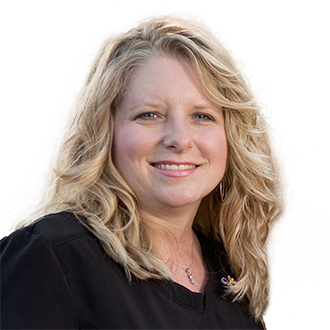Breast Lumps: When to Seek Help

Maybe it happened in the shower, during an intimate moment with a partner or while putting on lotion before bed. Finding a breast lump can be anxiety-provoking for women. Take a deep breath; even though most breast lumps will turn out to be normal breast tissue or benign (non-cancerous) masses, they should never be ignored.
Robin Benson, Breast Cancer Survivor & Senior Mammography Technologist at Wayne UNC Health Care, explains what women should do if they find a lump and suggests they consider the following:
Age
New breast lumps in women who have not gone through menopause are commonly benign. Examples include cysts, fibrocystic breast tissue or other benign tumors; however, cancer can develop in young women, so a new lump should not be ignored. New lumps in women who have gone through menopause are more concerning and should be evaluated as soon as possible.
Pain
Although cancer can be painful, more often it is painless. If a woman’s breasts are painful or if they have a tender lump, it’s likely related to cysts or hormones. If the pain persists for more than a few weeks, patients should see a doctor.
Nipple Discharge
Most nipple discharge is noncancerous, but new, bloody or spontaneous nipple discharge (meaning it drains out without squeezing) should be checked out promptly.
Skin or Nipple Changes
If patients notice changes in their nipple or breast skin, such as nipple retraction, dimpling, swelling or puckering (looks like an orange peel), they should call their doctor
Visiting the Doctor
Since all women do not experience the same symptoms of breast cancer, it’s important to get checked by a primary care physician or gynecologist, who will perform a physical exam to evaluate the breast lump or mass.
During the clinical breast exam, a woman’s doctor may recommend a mammogram or an ultrasound. Benson says imaging will reveal whether the breast lump is solid or fluid-filled and identify whether the breast lump has benign or possibly malignant characteristics. Depending on the results, a doctor may suggest a biopsy of the area or refer the patient to a breast specialist.
Self-Exams
Despite ongoing debates about the effectiveness of breast self-exams Benson suggests women conduct an exam monthly. Here’s how patients should do it:
- Attempt to flatten the breast tissue as much as possible with an arm up over their heads.
- Make sure they feel all of the breast tissue, including under the arm.
- Take note of anything that feels different, including breast lumps and pain.
There’s value in doing regular self-exams because patients get to know their breasts, their irregularities and how they feel, Benson says.
Remember: Mammograms Save Lives
General guidelines for mammogram screenings are geared toward average-risk women who are not obese, don’t smoke, don’t drink alcohol daily and have no family history of breast cancer, Benson says. But it’s important to keep in mind that many women do not have average risk.
Benson recommends women start annual clinical breast exams and mammograms at age 40. Mammograms save lives, she says, and finding a malignancy on a mammogram rather than by touch can help treat cancer sooner, before it spreads.
Wayne UNC Health Care offers the most advanced screening and diagnostic capabilities available, with 3-D Mammography that uses multiple X-rays to recreate a three-dimensional image of the breast. For more information about breast cancer screening, patients can make an appointment with a Wayne UNC primary care physician today.